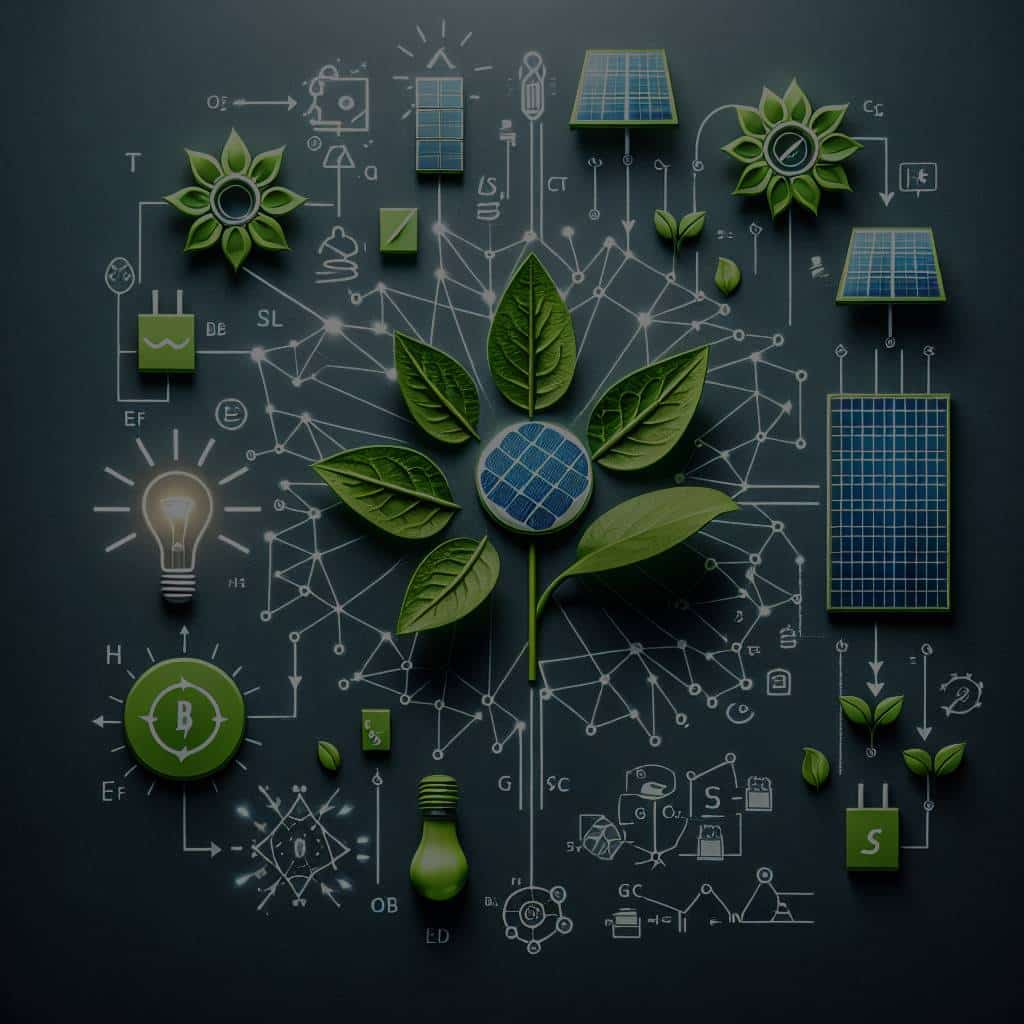Is Artificial Photosynthesis a Viable Option for Renewable Energy Production?

Energy, it’s a constant need for modern life, powers everything from our homes, cars, to the devices we depend on daily. The pursuit of cleaner, more efficient, and renewable energy sources is a critical global goal. One promising area of research is the concept of artificial photosynthesis. Using the same principle by which plants convert sunlight, water, and carbon dioxide into energy, researchers are exploring how we can replicate this process artificially. Could this process be the key to reducing our dependence on fossil fuels and paving the way to a renewable energy future? Let’s delve into the science behind artificial photosynthesis and its potential to revolutionize the energy sector.
Understanding Photosynthesis: From Nature to Laboratories
Photosynthesis is a process that plants, algae, and certain bacteria use to convert sunlight, water, and carbon dioxide into energy. It is one of the most critical processes in nature, playing a significant role in sustaining life on Earth. By replicating this process artificially, scientists aim to produce renewable fuels with high efficiency.
This might interest you : How Can AI Facilitate More Accurate Weather Forecasting and Climate Modeling?
Artificial photosynthesis involves the use of a system or device that can mimic the natural process. These systems generally contain a light-absorbing material or catalyst that can capture sunlight and initiate the reaction. The catalysts then trigger a chemical reaction that splits water molecules into hydrogen and oxygen. The hydrogen can be collected and used as a clean-burning fuel.
By developing materials and methods to optimise this process, scientists hope to unlock a potentially limitless source of clean energy. This area of research is still in its early stages, but the promise it holds is immense.
Also to read : Can AI and Satellite Imagery Provide Better Crop Yield Predictions for Farmers?
The Role of Catalysts in Artificial Photosynthesis
In any chemical reaction, the role of a catalyst is to speed up the process. In the context of artificial photosynthesis, catalysts play an essential role in the conversion of sunlight and water into hydrogen fuel. The efficiency of the catalyst in absorbing sunlight and triggering the water-splitting reaction is a crucial factor in the overall effectiveness of the system.
Many different materials can serve as catalysts, including some metals and semiconductors. The challenge lies in finding materials that are not only efficient but also stable and affordable. Current research focuses on developing new materials and improving existing ones to meet these requirements.
A promising development in this area is the use of nanotechnology. Scientists have developed nanomaterials with properties that enhance light absorption and accelerate the water-splitting reaction. These advancements could lead to more efficient and cost-effective artificial photosynthesis systems.
Generating Hydrogen: A Clean Fuel Source
One of the key products of artificial photosynthesis is hydrogen, a clean-burning fuel. When hydrogen burns, it produces water as a byproduct, making it an environmentally friendly alternative to fossil fuels.
The hydrogen produced through artificial photosynthesis holds great potential as a renewable energy source. It can be used in fuel cells, which generate electricity through a chemical reaction without combustion. This makes them a clean and efficient source of power for vehicles and other applications.
While the technology for using hydrogen as a fuel is already in place, the challenge lies in producing it sustainably and in large quantities. That is where artificial photosynthesis comes in. By harnessing sunlight to split water molecules, this process could provide a sustainable and potentially limitless source of hydrogen.
Progress and Potential: The State of Artificial Photosynthesis Research
The field of artificial photosynthesis is still young, but it has seen significant advancements in recent years. Researchers have developed systems that can effectively mimic the natural process and produce hydrogen with promising efficiency. Although these systems are not yet ready for large-scale deployment, they provide proof of concept for artificial photosynthesis as a viable renewable energy source.
One major challenge in advancing this field is the need for further research and development. This includes refining the materials used as catalysts, improving the design of the systems, and optimising the overall process. Despite these challenges, researchers are optimistic about the potential of artificial photosynthesis to contribute to renewable energy production.
Future Perspectives: Artificial Photosynthesis and Renewable Energy
Artificial photosynthesis holds great promise as a source of renewable energy. By mimicking a process that is fundamental to life on Earth, it could provide a clean, sustainable, and potentially limitless source of power. As research progresses and the technology matures, it could play a crucial role in our transition to a renewable energy future.
While the path to commercialisation is still long and fraught with challenges, the potential benefits of artificial photosynthesis make it a research area worth pursuing. And as the world continues to seek cleaner, more efficient, and sustainable energy sources, this innovative approach could prove to be a game-changer in the energy sector.
Pursuing the "Artificial Leaf": A Step towards Large-Scale Implementation
The pursuit of creating an "artificial leaf", a device that mimics the photosynthetic process of plants, is a promising pathway in the field of artificial photosynthesis. Similar to a natural leaf, the artificial counterpart is designed to collect sunlight and use that energy to facilitate chemical reactions. In the case of artificial photosynthesis, these reactions involve the splitting of water molecules into hydrogen and oxygen.
The concept of an artificial leaf isn’t entirely new. The first working model was unveiled by a team at the Massachusetts Institute of Technology (MIT) in 2011. Since then, researchers worldwide have been refining the design, enhancing the efficiency, and making the technology more cost-effective. The ultimate goal is to ramp up to large-scale production, transforming this scientific marvel into a practical, sustainable energy source.
Achieving large-scale implementation of artificial leaf technology means overcoming a few key challenges. One of these is the requirement of high-purity water for the water splitting process, which adds complexity and cost to the system. Researchers are exploring ways to make the technology compatible with more abundant and accessible water sources, like seawater.
Another challenge lies in the stability of the materials used in the artificial leaf. Exposure to sunlight and the reactive substances involved in the process often lead to the degradation of these materials over time. Therefore, the development of hardier, more durable materials is a priority.
Despite the challenges, the progress made so far in developing an artificial leaf technology provides optimism. Understanding and surmounting these hurdles will be crucial for bringing artificial photosynthesis out of the lab and into widespread use.
Conclusion: The Future of Renewable Energy and the Role of Artificial Photosynthesis
The search for renewable energy sources is more important than ever, as the world grapples with the growing issues of climate change and dwindling fossil fuels. In this quest, artificial photosynthesis could play a pivotal role. By mimicking the natural photosynthesis process, it presents an innovative way to harness solar energy and produce clean, sustainable hydrogen fuel.
The journey towards making artificial photosynthesis a viable, large-scale solution is still ongoing. It requires an intensive research and development effort, with a focus on refining catalyst materials, optimising water splitting process, improving system designs, and tackling the challenges of large-scale implementation. These are substantial tasks, but the rewards – a potentially limitless source of renewable energy – make them worthwhile.
Beyond its potential for renewable energy production, artificial photosynthesis could also contribute significantly to reducing carbon dioxide levels. By incorporating carbon dioxide into the photosynthetic process, the technology could both generate fuel and help mitigate climate change.
In conclusion, while artificial photosynthesis is still at a nascent stage, it holds immense potential. It represents a promising approach to address the pressing energy and environmental challenges of the modern world. With further research and technological advancements, the dream of harnessing solar fuels through an artificial leaf might soon become a reality, revolutionising our energy landscape and paving the way for a more sustainable future.
